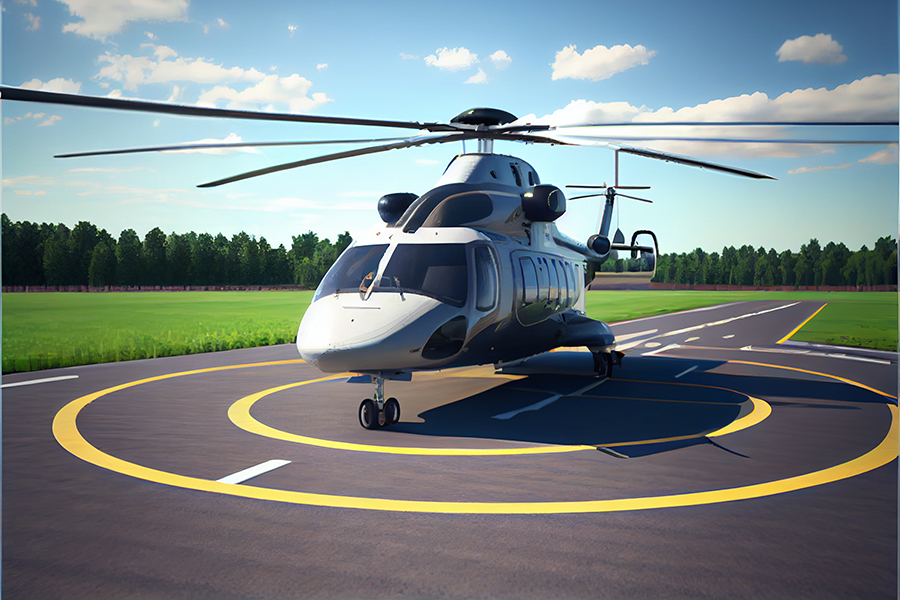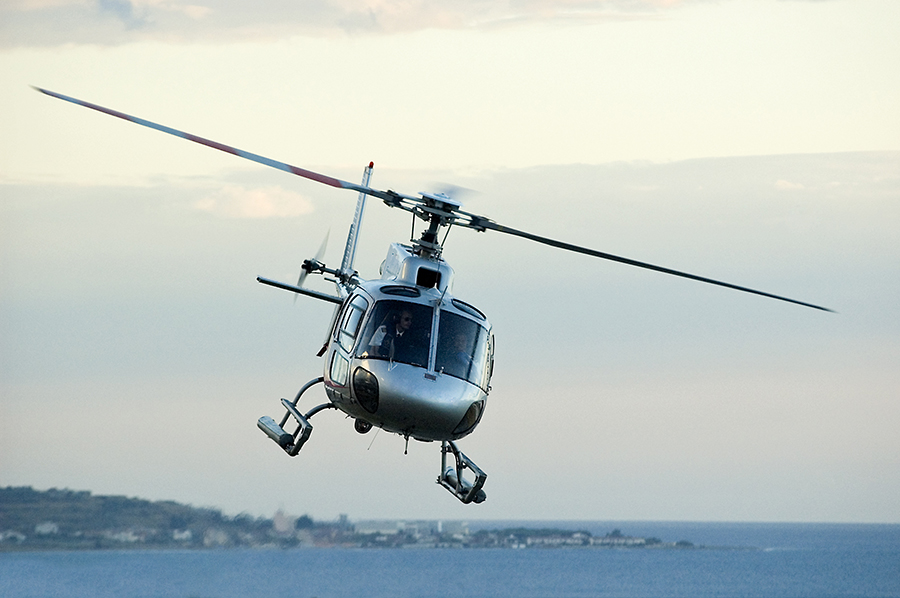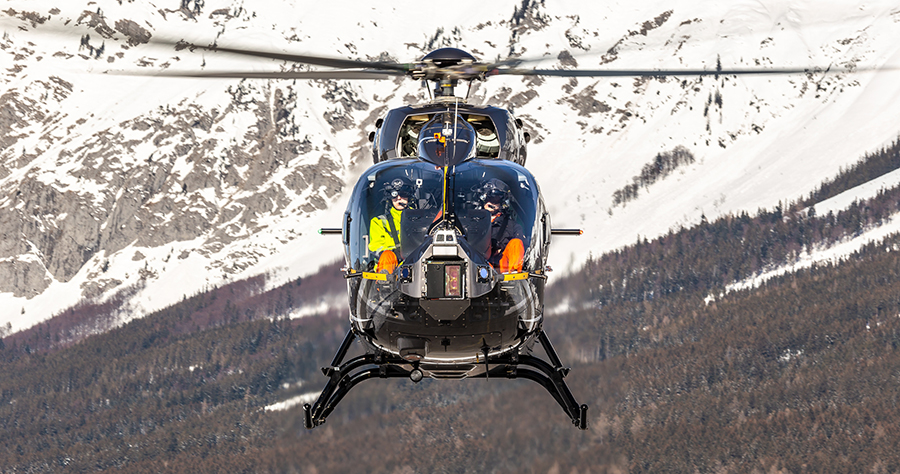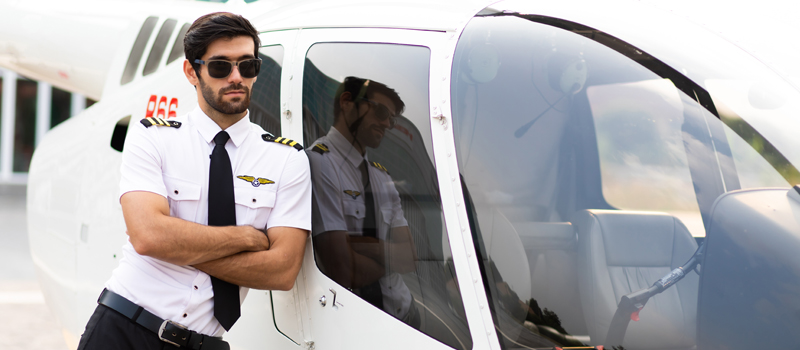-
Popular Helicopters and Their Maximum Speeds
-
The World's Fastest Helicopters
- 1. Westland Lynx
- 2. Eurocopter X3
- 3. Sikorsky X2
- 4. Bell/Boeing V-22 Osprey
-
How Do Helicopters Fly?
-
Why Helicopters Cannot Fly Fast
- The Phenomenon Of Flapback
- Airflow Reversal
- Retreating Blade Stall
- Air Compressibility
-
Conclusion
Helicopters are incredibly versatile flying machines. They can hover, turn on the spot, and land almost anywhere. So you might think that they could also fly really fast, faster even than fixed-wing aircraft.
Unfortunately, that’s not usually the case. The one thing that helicopters cannot do is fly quickly. Even the fastest helicopters are slow compared to their fixed-wing equivalents.
The average cruising speed of a helicopter is generally less than 160 knots (184 MPH). A fixed-wing aircraft may be as high as 450 knots (517 MPH). There is simply no helicopter that can cross continents at speeds approaching Mach 1 (the speed of sound), but several fixed-wing aircraft have done this.
So let’s take a look at how fast helicopters can actually fly.
Popular Helicopters and Their Maximum Speeds
The best-known helicopters rarely exceed 150 knots (172 MPH), and they definitely can’t go faster than 175 knots (201 MPH), as the following list of maximum helicopter speeds for well-known helicopters shows:
- Robinson R22: 102 knots (117 MPH)
- Robinson R44: 130 knots (149 MPH)
- Bell 206: 120 knots (138 MPH)
- Airbus Eurocopter EC120: 150 knots (173 MPH)
- Airbus H175 / Eurocopter EC175: 170 knots (196 MPH)
- AgustaWestland AW109 Power: 168 knots (193 MPH)
- AgustaWestland AW139: 167 knots (192 MPH)
- Ka-62: 160 knots (184 MPH)
- Sikorsky H92: 165 knots (190 MPH)
- AgustaWestland AW189: 169 knots (194 MPH)
- Airbus H155 / Eurocopter EC155: 175 knots (201 MPH)
- Airbus H225 / Eurocopter EC225: 175 knots (201 MPH)
However, there are a few helicopters that can go a fair amount faster than these figures. So let’s take a look at these super-fast helicopters.
But firstly – a word of warning. It should be noted that details of their actual maximum speeds do tend to differ slightly depending on the source of the information. So it is hard to say exactly which helicopter is the fastest.
The World’s Fastest Helicopters
1. Westland Lynx
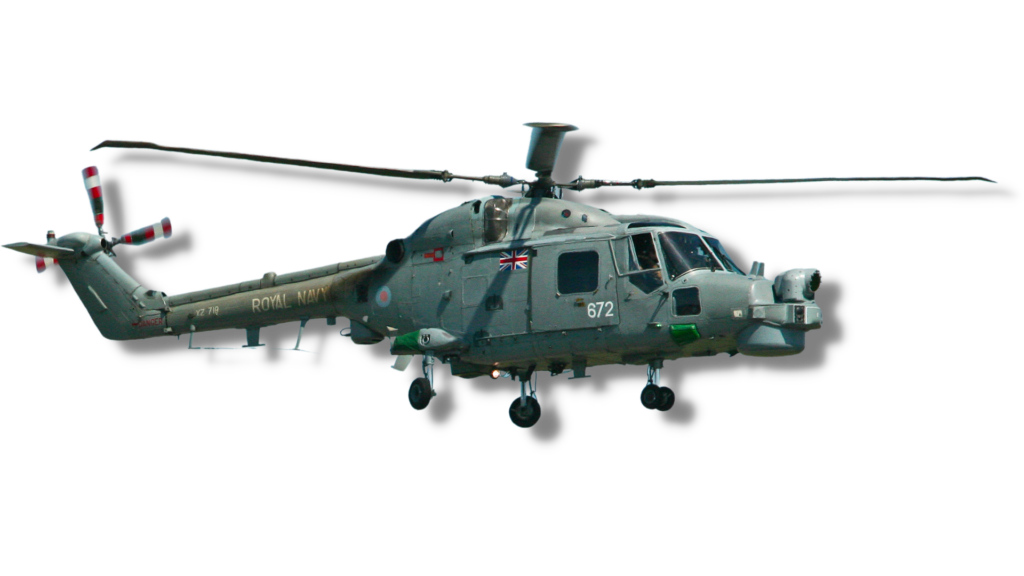
The Westland Lynx was long known as the fastest rotary aircraft in the world. In 1986 a military version of this helicopter set a world rotary speed record of 217 knots (250 MPH). It held this record for many years, before being overtaken by several other helicopter types. Isn’t innovation beautiful?
2. Eurocopter X3
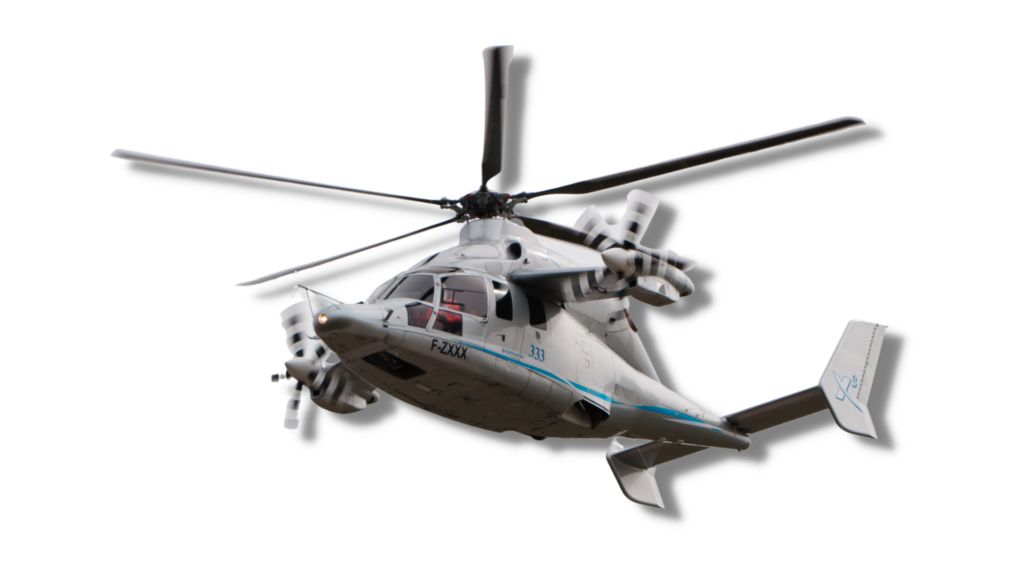
If you consider the Eurocopter X3 a helicopter, it is the fastest in the world, as it can reach 255 knots (293 MPH).
But it should be noted that it is actually a gyrodyne, which is a hybrid between a helicopter and an airplane. This means that its rotors are sometimes used similarly to propellers, and they face horizontally rather than vertically.
3. Sikorsky X2
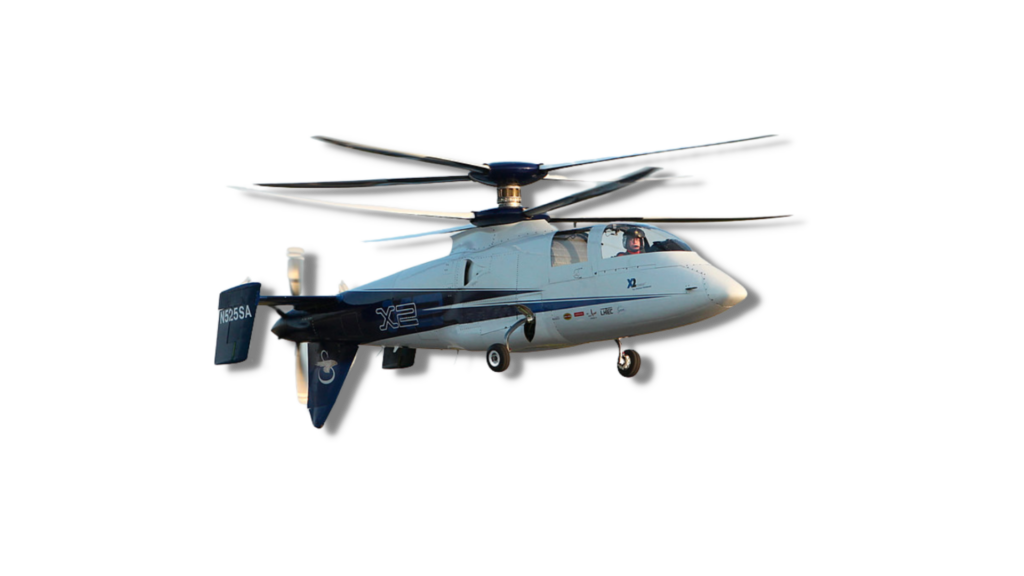
This helicopter type reached around 250 knots (288 MPH) in 2010, making it almost as fast as the Eurocopter X3. The X2 also has a propeller as well as the conventional rotors, and this makes a great deal of difference.
4. Bell/Boeing V-22 Osprey
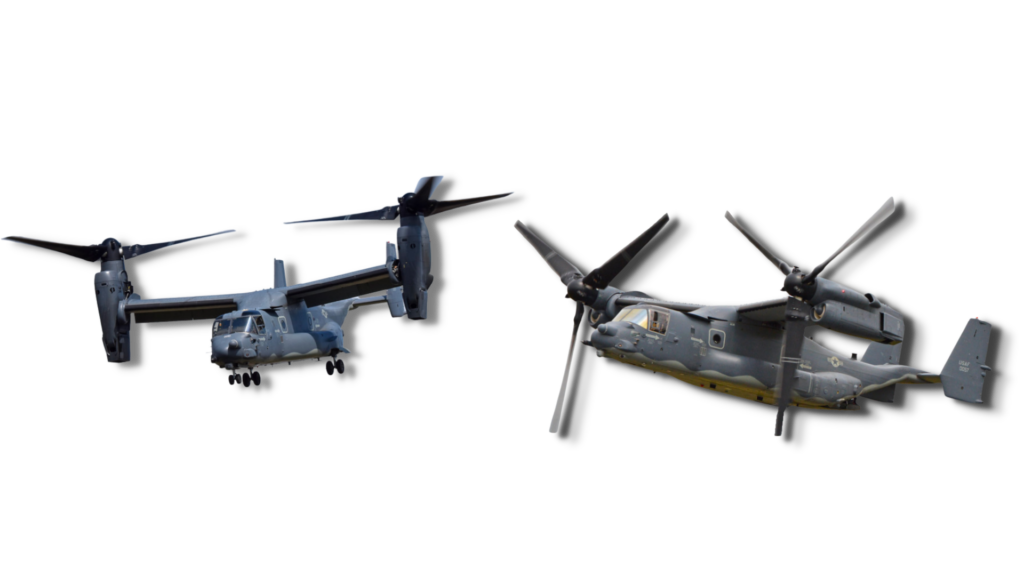
Some people would describe this as the fastest helicopter in the world, while others would argue that it is not technically a helicopter.
The V-22 uses tilt-rotors to transform itself from a helicopter to a fixed-wing aircraft, and back again.
So yet again, like the Eurocopter X3 and Sikorsky X2, it incorporates rotors that are operating horizontally, at least some of the time.
The Osprey has a maximum recorded speed in ‘helicopter mode’ of about 275 knots (316 MPH), which would indeed make it the fastest helicopter in the world. It is used mostly used by the US Military.
Other new types of helicopters are on the way, so the answer to the question “How fast do helicopters fly?” is ever-changing. But nearly all of these super-fast helicopters incorporate additional propellers as well as the conventional rotors of ordinary helicopters – this makes all the difference. Conventional helicopters simply cannot fly fast, and most likely never will be able to.
So why is this the case?
Helicopter aerodynamics is somewhat different from that of fixed-wing aircraft. To put it simply, the lift is generated in a slightly different manner, and this will only work up to a certain speed.
You might want to leave things there since, to really understand the answer, we need to examine some basic principles of helicopter flight. That sounds complicated, but it really isn’t. Please read on, and don’t panic. This whole subject isn’t nearly as difficult to follow as many people think.
We first need to look at exactly how helicopters fly.
How Do Helicopters Fly?
Many people think it is a mystery that helicopters manage to fly at all! After all, they don’t have any wings, do they? They seem to be an assortment of different moving parts, none of which look remotely aerodynamic at first glance.
But, of course, helicopters can fly, and the mechanism by which they do so is not that complicated.
The basic idea is the same as for fixed-wing aircraft – the wings, when placed in an airflow, produce lift. This causes the aircraft to raise itself into the air. But the ‘wings’ of a helicopter are its rotor blades, and the airflow is produced by the rotors being rotated. When the rotor blades start to spin, lift is produced, and the helicopter can lift into the air.
This is fine until the helicopter starts to move forward. This causes the air to flow faster over the advancing blade (the one moving towards the airflow) than the retreating blade (the one moving towards the rear of the helicopter and away from the airflow). This means the advancing blade has more lift than the retreating blade, and if nothing is done, the helicopter will roll over and crash as soon as it starts to move forward.
In fact, this is exactly what happened with the very first helicopters. The problem was solved by examining the autogyro, which had been invented back in the 1920s by a Spaniard, Juan de la Cierva. He discovered that if the blades were allowed to flap up and down while rotating, everything worked just fine as the amount of lift was equalized across the blades. This technique was incorporated into helicopter design, and called, perhaps unsurprisingly, “flapping to equality”.
However, this flapping to equality only works up to a certain speed, for several reasons.
So now, let’s take a look at what happens at high speed, and why helicopters cannot fly that fast.
Why Helicopters Cannot Fly Fast
The Phenomenon Of Flapback
As explained above, the helicopter flies along, with the blades flapping and lifting thereby being equalized, and everything works well. However, a side effect of this flapping is that when the cyclic (joystick) is moved forward to increase speed, the rotor disc (the hypothetical disc made by the spinning rotor blades) tilts forward initially but then flaps back. Further forward movement is required in order for the helicopter to continue to accelerate, and this phenomenon is known as ‘Flapback’.
Flap back occurs throughout the whole speed range of the helicopter. So, if we want to increase our speed, the cyclic has to be moved progressively further and further forward while flying. I remember when I was learning to fly helicopters, being urged by my instructor, “Come on, push through flap back”. It feels as though the helicopter is trying continually to slow down, and in effect, it is.
Strictly speaking, there will come a point at which the cyclic is at its forward limit, and the helicopter cannot fly any faster. This is the limit of the helicopter’s speed, and is one reason why helicopters cannot fly all that fast…but only one. In practice, there are other factors apart from flap back that is likely to play a part in limiting the helicopter’s forward speed, before the cyclic reaches its limit.
Airflow Reversal
As the helicopter flies gradually faster and faster, the difference between the relative speed of the advancing and retreating blades increases.
Confused? Don’t worry; it makes more sense if we put in some actual numbers.
Suppose the helicopter is moving forward at 20 knots, and the blades are rotating at X knots. Assuming no wind, the advancing blade is moving at X + 20 knots, and the retreating blade is at X – 20 knots. So the difference between the airspeed of the advancing blade and the retreating one is 40 knots. But if the helicopter is moving at 100 knots, this difference becomes 200 knots!
Now, there will come a point at which the root of the retreating blade, which is the slowest part, has zero airspeeds since the helicopter is moving forward at a faster speed than that section of the blade is rotating. When that occurs, this particular section of the rotor blade cannot produce any lift at all
At first, this inability to produce any lift only occurs over only a small area of the blade. But, as the helicopter speeds up, this ‘airflow reversal’ takes place over a larger and larger area of the retreating blade. The only way the rotor system can compensate for this is for the outer part of the retreating blade to work harder and harder.
So the outer section of the blade has to produce more lift, and it does this by operating at a higher and higher angle of attack, which is achieved through more flapping.
It is not a terribly efficient way for the helicopter to operate, but it works, and tests have shown that some helicopters at maximum forward speed have 40% of the retreating blade affected by reverse flow.
But, there is a limit to how far this can go while the helicopter still is able to fly effectively. There comes a limiting point at which lift is no longer produced, and the retreating blade enters a stall. As you might expect, this phenomenon is called Retreating Blade Stall.
Retreating Blade Stall
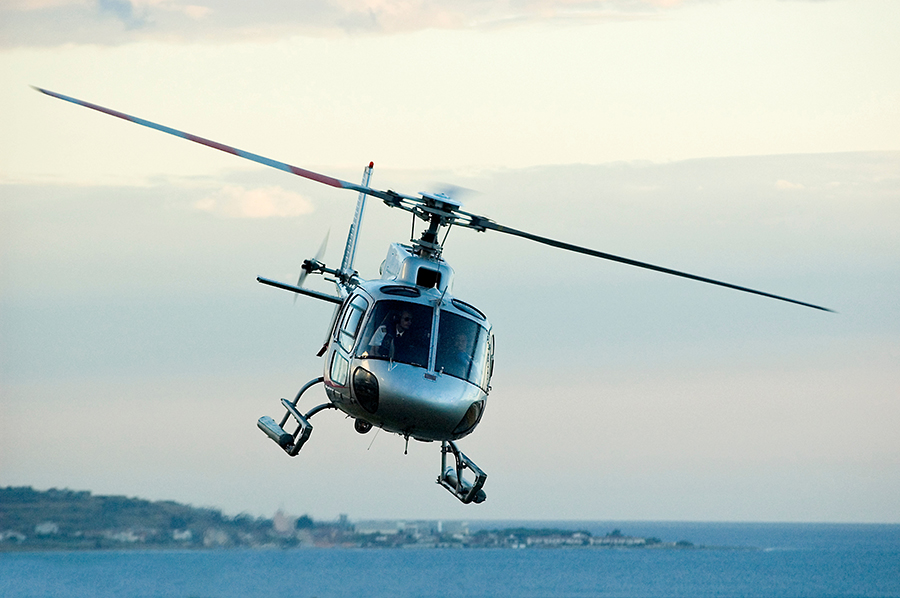
As with any aerofoil in any type of aircraft, if the angle of attack increases beyond a certain point, the blade will stall. This is known as a “retreating blade stall.”
A retreating blade stall starts at the tip of the blade since this is the area that has the highest angle of attack, and spreads inwards to the root. And, basically, the retreating blade ceases to produce any more lift, as would occur with any stalled ‘wing’. When this happens, the helicopter first pitches its nose up and then rolls to one side or the other.
This sounds rather scary, and it sure is. But, as with any stall, there are definite symptoms that occur before the full stall actually occurs. The first signs are vibration and rotor roughness. However, since most pilots have not experienced a retreating blade stall before, or at least very rarely, the symptoms may go unrecognized. Also, as the retreating blade starts to stall and the helicopter pitches its nose up, this in itself will slow the helicopter down, and it may correct the problem before the result becomes catastrophic. Therefore, a retreating blade stall can be self-correcting.
If the pilot does actually recognize what is happening, he or she should lower the collective to decrease the blade pitch angles. Pulling back on the cyclic, which would raise the nose of the helicopter further, might sound as though it would save the day by slowing down the aircraft, but it ends up increasing the angle of attack of the blades…for aerodynamic reasons far, far too complicated for me to go into here! However, once the collective (power) has been lowered, the aft (back) cyclic can be used to slow the helicopter down.
A retreating blade stall is actually very rare. It hardly ever occurs at high speeds but can happen during aggressive maneuvers, abrupt control movements, or flight in turbulence. So, for this reason, it is a good idea for pilots to be aware of it and know how to recognize the symptoms, but that’s about all.
A retreating blade stall is certainly unlikely to happen just because you decide to fly a bit faster than is recommended. But it is still a reason why helicopters cannot fly really fast.
Air Compressibility
There is one more aerodynamic factor that can limit high-speed helicopter flight, and this is air compressibility. At high airspeeds approaching the speed of sound, the character of the airflow is changed, and compressibility must be taken into account.
The helicopter may not be moving at anything approaching this sort of speed, but its rotor blades certainly are. In this case, it is the speed of the advancing blade that can cause problems, as the rotation speed must be added to the forward airspeed.
In forward flight at 150 knots, the advancing blade tip of a typical turbine helicopter has a speed of around 295 meters per second, very close to the speed of sound at sea level, which is 340 meters per second.
This means that compressibility is significant, which means that more power is required for the same rotor thrust, and shock waves may be produced with increasing vibration and noise. So again, this will limit your speed.
Conclusion
Some of the above may be rather confusing if the principles of helicopter flight are new to you. But put simply, when you get beyond a certain airspeed in a helicopter, you may have problems because your retreating blade is moving too slowly, and/or your advancing blade is moving too fast. Without all of the aerodynamic details, that’s about all there is to it. Unfortunately, this means that the basic design of a helicopter is what limits its speed.
So this is why there are no superfast helicopters – except, of course, those which are basically fixed-wing/helicopter hybrids like the Eurocopter X3, the Sikorsky X2, and the V-22 Osprey. These use some type of propeller as well as conventional rotors.
But when it comes to conventional helicopters, there will most likely never be one that can go as fast as a high-speed fixed-wing aircraft. Helicopters are just not aircraft for the speed freaks among us.
But why worry when there are so many other amazing things you can do with a helicopter? Who really needs to go fast?
